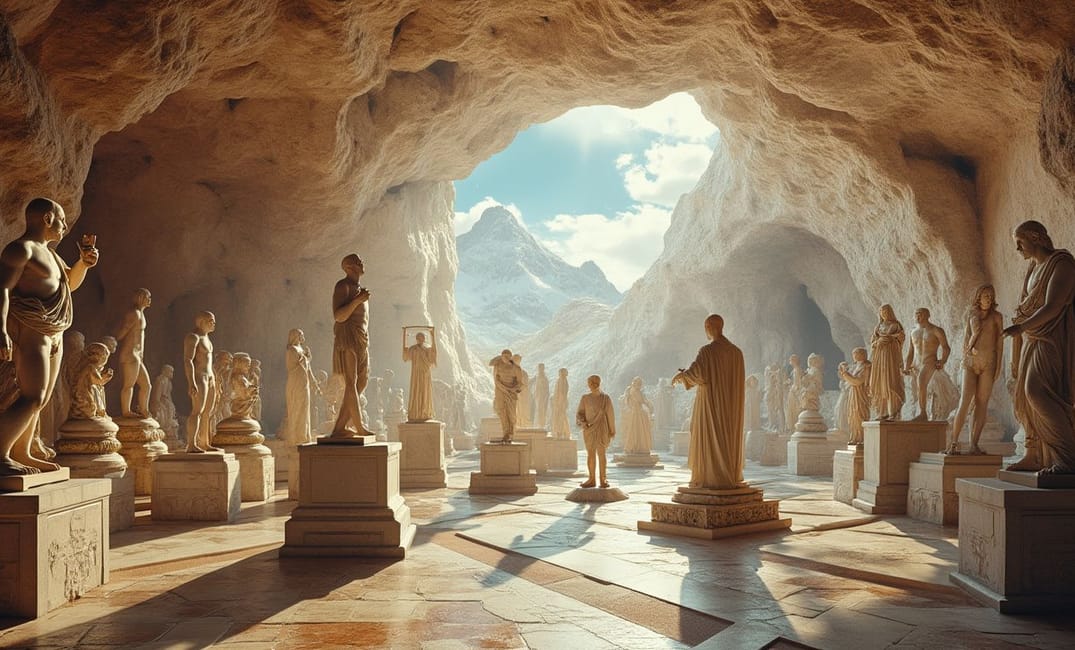Introduction: The Universality of Artistic Expression
Throughout history, art has been a fundamental aspect of human culture, serving as a reflection of societal values, emotions, and aspirations. It transcends language and geography, embodying the complex interplay between identity, creativity, and human experience. Art has evolved beyond traditional canvases and clay, capturing the essence of humanity through myriad forms—from abstract sculptures to digital landscapes. Today's entry explores how artistic expression has shaped, and been shaped by, human history and societal change, highlighting its enduring legacy and transformative power.
Ancient Art: The Foundations of Cultural Identity
Cave Paintings and Sculptures
- Narratives in Stone and Paint: The earliest evidence of human creativity is found in prehistoric cave paintings and sculptures, often depicting animals, human figures, and abstract forms. These works reflect the deep-seated need to communicate and document, serving as visual narratives that offer insights into the myths, hunts, and rituals of ancient communities.
- Totems and Figurines: Sculptures such as the Venus figurines or totemic carvings were not only aesthetic but carried symbolic meanings, embodying fertility, spirituality, or clan identity. These artifacts highlight the intersection of art with social and religious life, reinforcing cultural values and collective memory.
Early Civilizations: Art as Power and Religion
- Egyptian Statuary and Murals: Egyptian art, characterized by monumental statuary, intricate murals, and hieroglyphics, sought to immortalize the divine and the regal. Temples, tombs, and pyramids served as sanctuaries of artistic achievement, upholding religious beliefs and affirming the pharaohs' divine status.
- Mesopotamian and Mesoamerican Art: In Mesopotamia and Mesoamerica, art flourished as a narrative tool, depicting myths, conquests, and societal order. Bold ziggurats, intricate reliefs, and vibrant pottery attest to the civilizations' artistic ingenuity and their role in fostering collective identity and cosmological understanding.
Classical and Medieval Influence: Art as Culture's Mirror
Classical Period: Harmony and Idealism
- Greek and Roman Contributions: Classical art championed ideals of harmony, proportion, and beauty, as manifested in Greek sculptures like "The Discobolus" and Roman frescoes. This pursuit of aesthetic perfection was not merely artistic but philosophical, reflecting societal aspirations and intellectual endeavors.
- The Birth of Naturalism: Classical artists pioneered naturalism, striving to portray the human form with anatomical accuracy and emotive expression. Such artistry contributed to subsequent revolutions in artistic technique and style, echoing through Renaissance works centuries later.
Medieval Art: Symbolism and Spirituality
- The Illuminated Manuscript: In the medieval era, art was deeply interwoven with religious life, exemplified by illuminated manuscripts that juxtaposed text with vibrant illustrations to enhance spiritual experiences and convey theological narratives.
- Gothic Architecture and Stained Glass: Cathedral architecture catalyzed new artistic experimentations with forms such as stained glass windows, sculptural facades, and vaulted ceilings. These masterpieces captured light and spirituality, guiding worshipers into contemplative and transcendent experiences beyond the temporal world.
The Renaissance to Modernity: Rebirth and Revolution
Renaissance: Innovation and Rediscovery
- Humanism and the Florentine Masters: The Renaissance marked an artistic and intellectual rebirth, reawakening classical influences through a humanist lens. Artists like Leonardo da Vinci and Michelangelo combined observational science with artistic innovation, exploring humanity's complexity and elevated potential through masterworks that continue to inspire.
- Perspective and Depth: Artistic techniques underwent transformation with the advent of linear perspective, enabling artists to create immersive, spatially accurate compositions. This innovation contributed to the emotional and intellectual depth behind paintings and architectural designs, narrating stories through multidimensional perspectives.
Modernism: Challenging Conventions
- Impressionism and Abstraction: As societies transitioned to industrialized modernity, art responded by breaking conventions with movements like Impressionism, which captured fleeting experiences and emotions through light and color. Abstraction further challenged representational norms, exploring the subconscious and universal truths.
- Surrealism and Social Commentary: Surrealists like Salvador Dalí pushed boundaries, melding dreamscapes with reality to question societal norms and human psychology. Art became a medium for critical discourse, highlighting societal tensions, political upheavals, and personal introspection.
Contemporary Art: Technology and Global Perspectives
The Digital Revolution
- Virtual and Augmented Realities: The digital age has transformed artistic creation and consumption through virtual and augmented realities, enabling artists to craft immersive experiences that challenge perceptions of space, time, and identity.
- Digital Sculpture and AI Artistry: Utilizing artificial intelligence, artists experiment with algorithms to create works that evolve autonomously, redefining notions of authorship and creativity, while expanding the boundaries of artistic expression into new realms of possibility.
Global Art Movements
- Art as Activism: Contemporary art transcends traditional confines, serving as a platform for challenging social injustices, environmental concerns, and cultural identities. Artivism, a blend of art and activism, uses powerful visuals and installations to catalyze change.
- Cultural Hybridity and Collaboration: Globalization has fostered cultural exchanges, leading to hybrid art forms that incorporate diverse traditions and narratives. This blending exemplifies shared creative expression, encouraging dialogue and collaboration across cultures through collective exploration and innovation.
Conclusion: The Enduring Power of Artistic Expression
Art has remained a dynamic and indispensable element of human society, embodying our capacity for creativity, reflection, and connection. Whether sculpted in marble or programmed in code, art transcends its medium, serving both as a mirror of its age and an instrument of foresight and innovation. As humanity continues to explore new frontiers and challenges, artistic expression will undoubtedly play a crucial role in shaping our imagination, values, and shared identity—an eternal testament to the boundless creativity at the heart of the human experience.
"Art is the infinite canvas where humanity's dreams, realities, and possibilities converge, painting a narrative that transcends time, unveiling the depths of the soul in strokes of eternal wonder." — *Author Unknown*
ART, CULTURE, CREATIVITY, EVOLUTION, HISTORY, HUMANITY, IDENTITY, EXPRESSION, DIGITAL ART

